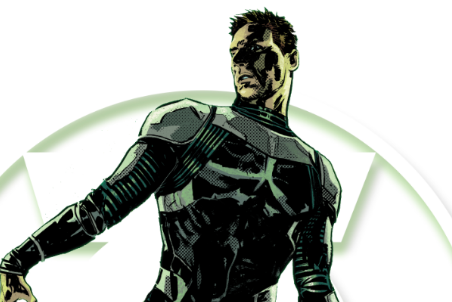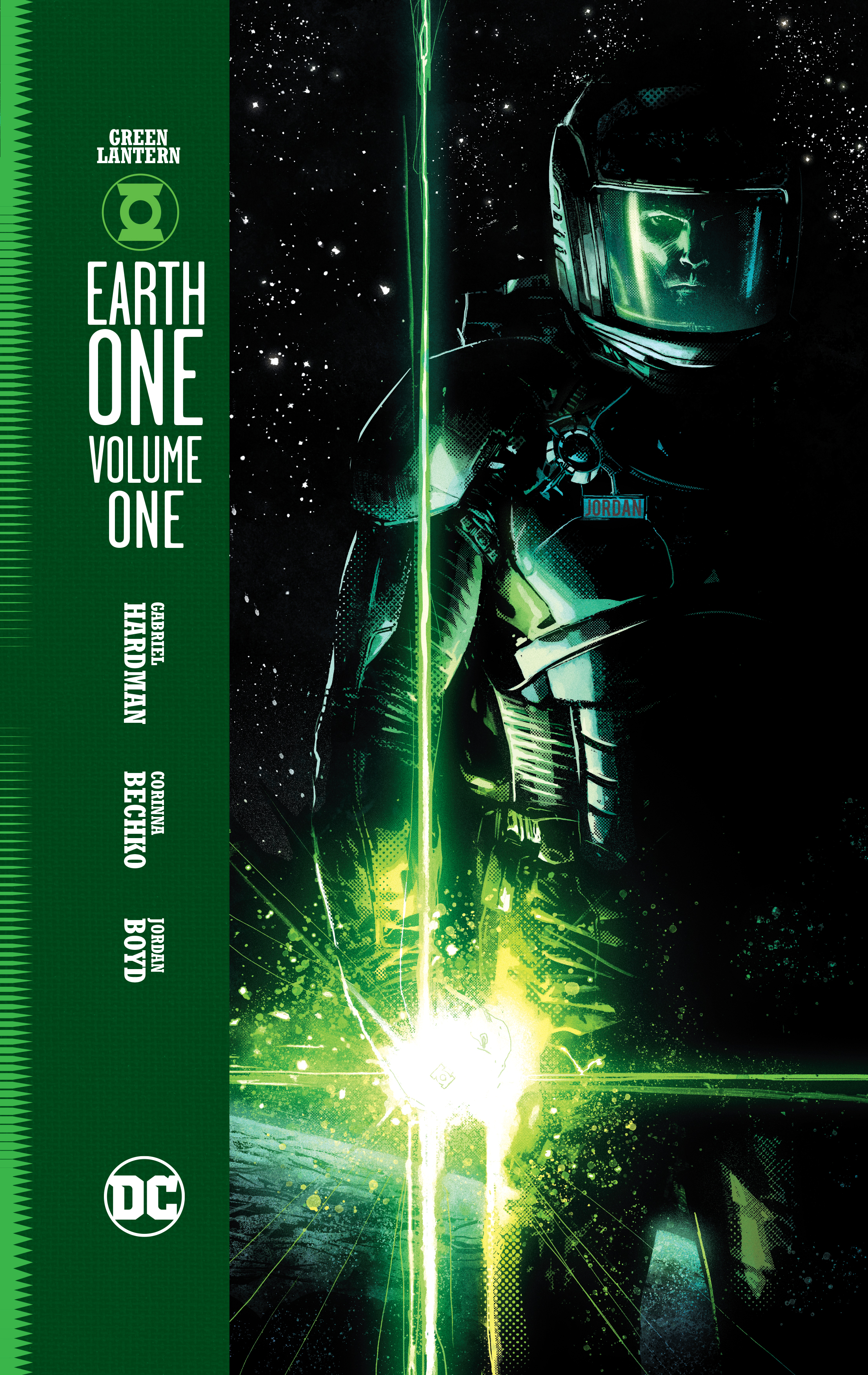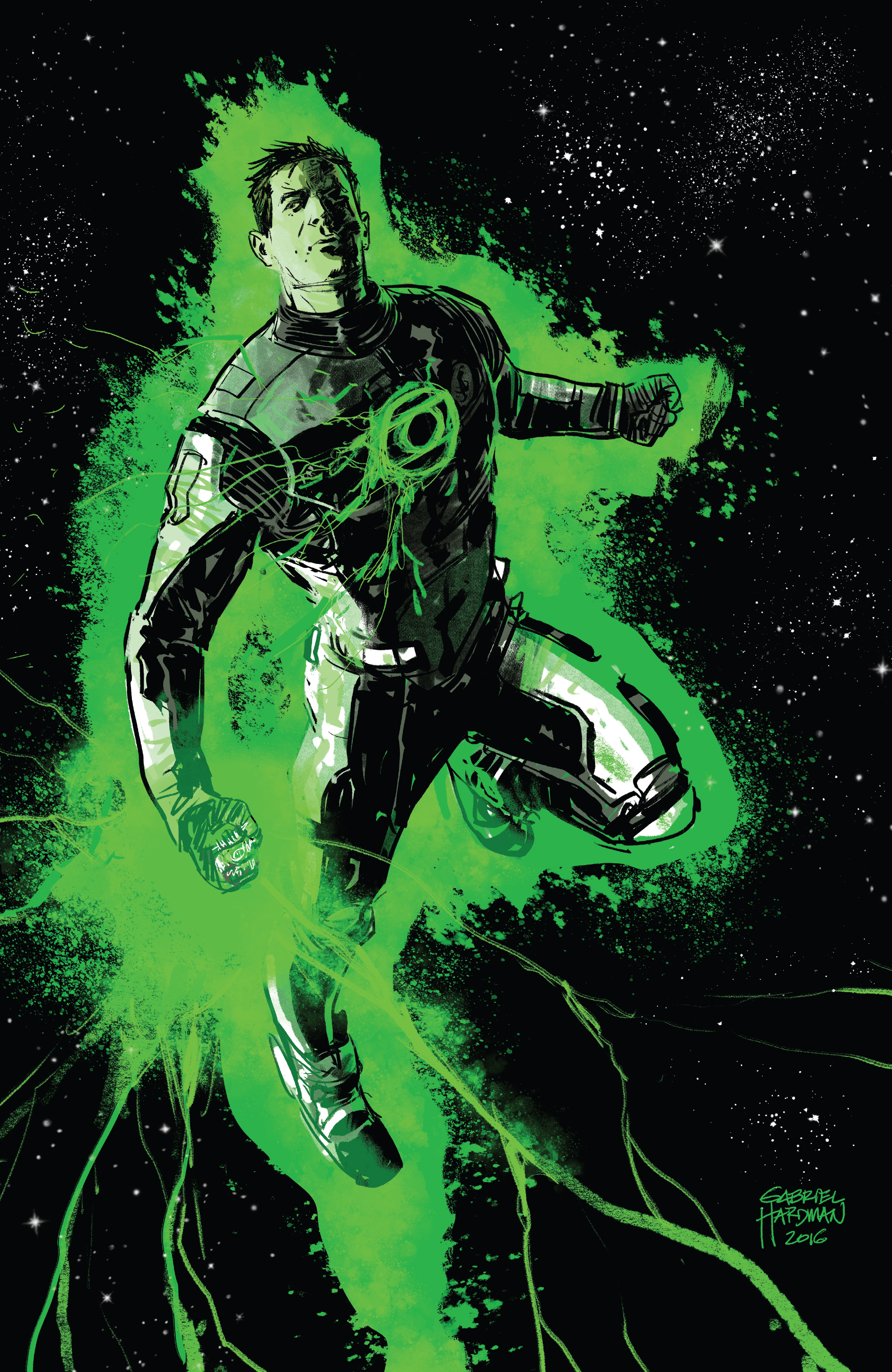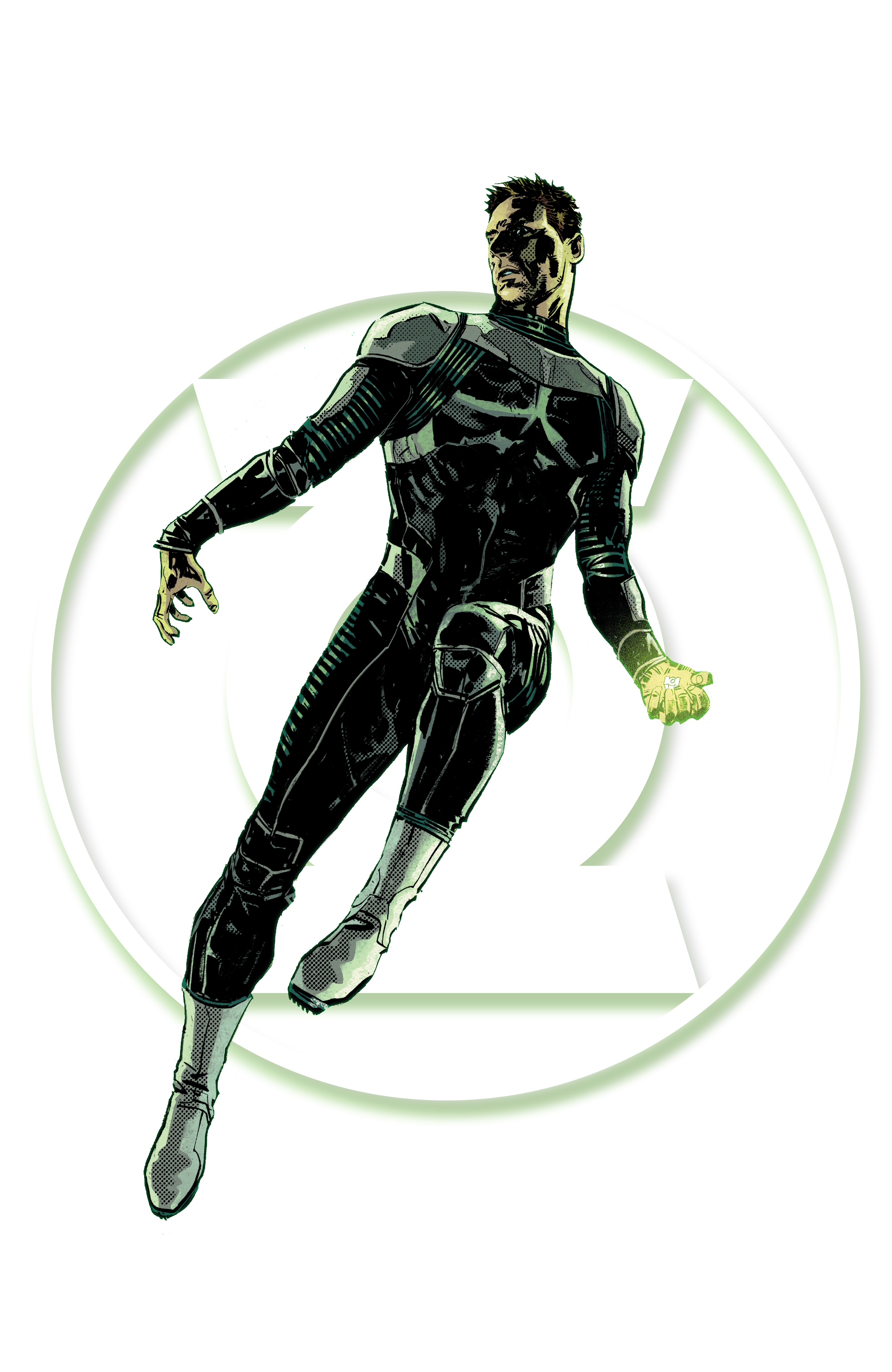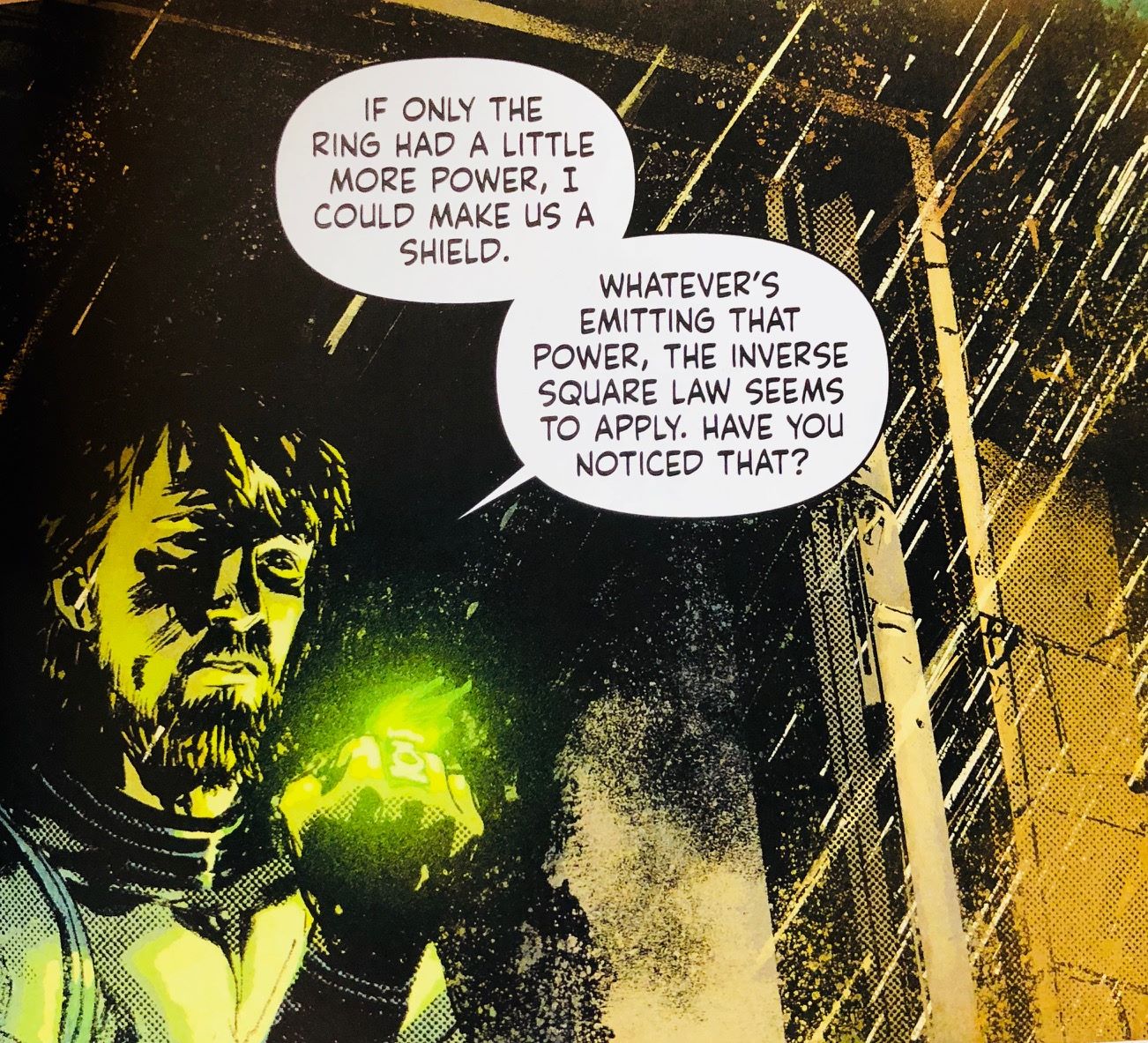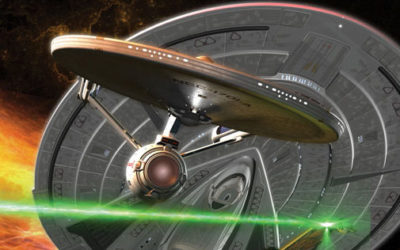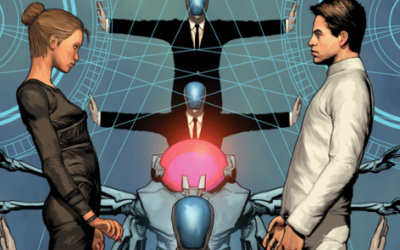DC Comics line of “Earth One” graphic novels have finally gotten their hard science fiction entry. Green Lantern: Earth One Volume One by the husband and wife team of Gabriel Hardman and Corina Sara Bechko brings Hal Jordan to the reimagining concept, and the 128-page graphic novel is stellar.
And we’re not just saying that because no one sets foot on earth in the story.
The volumes that have come out so far in the Earth One lineup (two each so far for Batman, Superman and the Teen Titans, with one for Wonder Woman with more planned) have consistently reimagined iconic DC characters – no matter how fantastic – in a more realistic, grounded setting. The stories aren’t just “updated,” with the characters’ origins tweaked for modern times. The characters and their stories are designed, structured and told from a point of view that makes sense for a reader who may not have grown up with the hero – in this case, someone who literally might be picking up a Green Lantern comic for the very first time.
Case in point – GL: EO V1 is set in a near-future that’s extremely relatable. Hal Jordan works as an asteroid miner longing for the chance to explore, who’s now scrounging out a living working for Ferris Galactic. Having recently decided he’s never going back to earth – Jordan’s destiny is changed when he discovers an alien ship embedded in an asteroid he’s prospecting. From there, Hardman and Bechko blend in the known with the new – a dead alien, a ring, a battery, Manhunters – and lots of danger.
The world of GL: EO V1…it makes sense. That’s the best way to put it. In 1959, DC Editor Julie Schwartz revived the magic-based Green Lantern character and updated him for the time. Instead of Alan Scott, this new Green Lantern was Hal Jordan, a fearless (and somewhat cocky) test pilot. Pushing the Earth One’s Hal into space with a wanderlust that can’t be quenched, Bechko and Hardman have started something very cool – something that feels like that cool science fiction movie that you discovered that you can’t believe everyone isn’t talking about.
For the hardcore Green Lantern fans – you should know going in, not all of the pieces are where you’d expect them to be, and some aren’t even on the table. There are no Corps. The Manhunters have seen to that. The Guardians themselves exist only in legend. Oa has a power battery, but it’s barricaded and guarded by Manhunters. The universe is seemingly littered with the bodies of dead Lanterns and dead power rings. GL: EO V1’s version of space and space exploration is…rough. “More Gravity than Star Trek” as the book’s backmatter says. Science is treated with respect and as a real thing. Heck, Hal talks about how the power battery seems to follow the inverse-square law, which is probably the first time it’s been mentioned in a comic book in…forever.
It’s so, so very worth your time and worth a spot on your bookshelf.
We had a chance to have a brief chat with the creative duo about the project.
The Science Of: To start with, can you explain a little about the Earth One concept and how that “changes” the characters that appear there, and how Green Lantern works within the framework?
Gabriel Hardman: In out story, the Lanterns aren’t chosen for their fearlessness or any other reason. That’s the primary change we made to the original Green Lantern concept. Anyone can pick up a ring and use it – it’s a tool. They can’t use it well until they learn how. But ultimately it’s the character of that person who uses the ring that determines if it’s used for good or ill.
TSO: Given that the Earth One titles are heavier on the “real world” side of things can you explain some of the process you went through in deciding where to put Hal’s story into more modern science fiction than it was previously? For example, what could stay? What could go? What had to be updated?
GH: Since we weren’t beholden to any previous continuity, we were able to strip away some things that are fun Silver Age holdovers in the ongoing GL books but don’t necessarily serve a 128-page graphic novel. Something like reciting an oath to a battery is such an ingrained part of the lore but it doesn’t change the story much if it’s gone. Also, it takes up page real estate. We eliminated some elements that serve a purpose in this particular story. Though there are many things like the rings, power batteries and the corps that are iconic and important for the story. We just used them in somewhat different ways.
TSO: While some parts of EO: GL are well-steeped in science, the travel is a little…not mentioned. Is that something that has a more “realistic” feel to it as well, or is it just one of those things that has to be put by the side for the sake of the story?
Corinna Sara Bechko: I have read several very good science fiction stories that deal with space travel and its inherent contradictions and problems. Very few of them had room for much else, since traveling over interstellar distances is hard. And weird. And definitely not easy to explain. Early on we talked a bit about making that aspect more realistic, but quickly abandoned the idea because of what it would do to the timeline of Hal’s journey. In the end, this is science fiction. And that means that the flow of the story is more important than explaining every detail. And so we wrote a ring that is so advanced that it can bend certain laws of physics as well as skip over nasty details like everyone Jordan ever knew being dead by the time he returns to Earth.
TSO: With the Guardians being ancient beings of myth and the stories of the Corps relegated to history, you seem to be playing with the ideas of the universe having more dead civilizations in it than those that are currently alive. Would that be an accurate way or looking at it?
CB: I’ve always found that to be an intriguing concept, and one that is quite resonant given what modern humans are dealing with. Species have a habit of going extinct fairly often even at background rates, but humanity is currently finding new and exciting ways of snuff ourselves out in spectacular fashion. I try to be hopeful and believe that there are lots of civilizations in the universe, but I think that logically there’s a good chance that many of them get to about our level and not any farther. And if that’s true, how many more must get past where we are only to find even more exotic ways of killing themselves? There are probably quite a few interesting tales of destruction out there.
TSO: And the larger universe that Hal finds with its back alley/blue collar feel…it seems that no one falls into fantastic space kingdoms or empires like Flash Gordon did anymore. You touched on that more political, admittedly, side of things with Invisible Republic, but it seems that so much science fiction these days has been of that gritty, blue-collar feel. Why did you go that way, and do you have any thoughts on the shift?
GH: The mandate with an Earth One book is to make it grounded. What you call “blue-collar,” I call relatable. I prefer to set stories in worlds that feel lived in. I often hear this idea thrown around but it’s not like the two possibilities are “shiny Flash Gordon” and “gritty blue collar.” Even in Green Lantern we show glimpses of many varied civilizations. But it’s simply not a fantasy-oriented book.
TSO: When Julie brought GL back and made him more of a science hero than the original “magic ring” with Alan, the “technology” of the ring was so fantastic that it could have been magic, regardless. But now, nearly 60 years later…how do you make the ring just as fantastic for today’s readers, without having them say, “Oh yeah – cool…Google Translate can do that….” I guess, in short, is this ring effectively the same ring that “our” Hal Jordan wore, or is it updated, tweaked out and more “modern?” Any hints at things it can do that Hal’s originally couldn’t?
CSB: The ring has always been a bit malleable in its abilities. And while it’s true that a lot of what we have now seems magic even by the standards of a few decades ago, I don’t think it’s very difficult to take things just a step farther and have them feel, if not unattainable, then at least wishful in the extreme. That’s part of why we chose to spend so much of this book in space. A lot of the advances in the last generation or so have been very much Earth-bound. Going to space seems like something we want and should do, but also like something that hasn’t moved as quickly as we might have expected given the pace of exploration in the ‘60s.
Green Lantern: Earth One Volume 1 can be found in comic shops, bookstores and online at Comixology.com.
Green Lantern: Earth One Volume 1 review at The A.V.Club.


